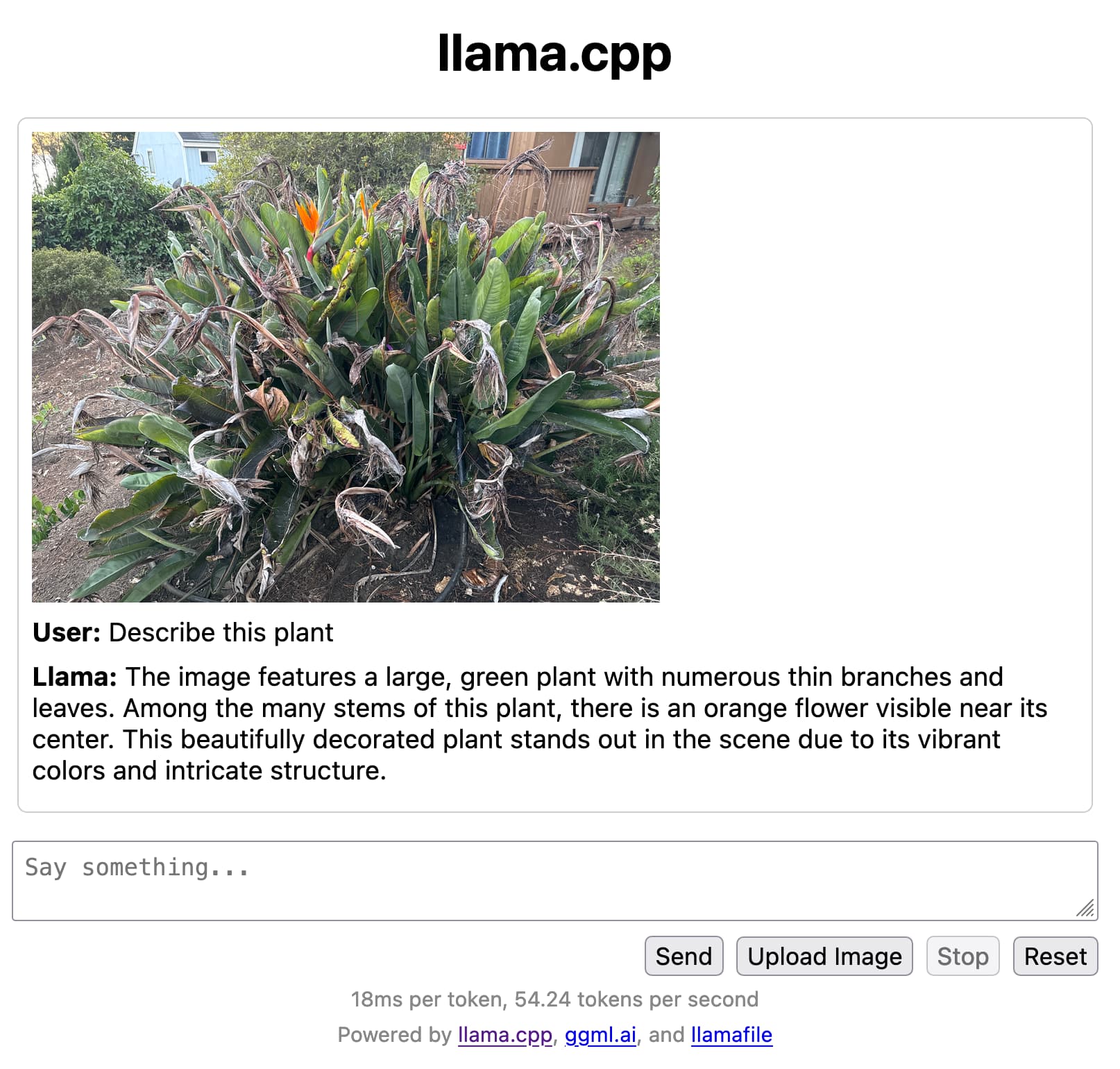llamafile is the new best way to run an LLM on your own computer
29th November 2023
Mozilla’s innovation group and Justine Tunney just released llamafile, and I think it’s now the single best way to get started running Large Language Models (think your own local copy of ChatGPT) on your own computer.
A llamafile is a single multi-GB file that contains both the model weights for an LLM and the code needed to run that model—in some cases a full local server with a web UI for interacting with it.
The executable is compiled using Cosmopolitan Libc, Justine’s incredible project that supports compiling a single binary that works, unmodified, on multiple different operating systems and hardware architectures.
Here’s how to get started with LLaVA 1.5, a large multimodal model (which means text and image inputs, like GPT-4 Vision) fine-tuned on top of Llama 2. I’ve tested this process on an M2 Mac, but it should work on other platforms as well (though be sure to read the Gotchas section of the README, and take a look at Justine’s list of supported platforms in a comment on Hacker News).
-
Download the 4.29GB
llava-v1.5-7b-q4.llamafilefile from Justine’s repository on Hugging Face.curl -LO https://huggingface.co/jartine/llava-v1.5-7B-GGUF/resolve/main/llava-v1.5-7b-q4.llamafile -
Make that binary executable, by running this in a terminal:
chmod 755 llava-v1.5-7b-q4.llamafile -
Run your new executable, which will start a web server on port 8080:
./llava-v1.5-7b-q4.llamafile -
Navigate to
http://127.0.0.1:8080/to start interacting with the model in your browser.
That’s all there is to it. On my M2 Mac it runs at around 55 tokens a second, which is really fast. And it can analyze images—here’s what I got when I uploaded a photograph and asked “Describe this plant”:

How this works
There are a number of different components working together here to make this work.
- The LLaVA 1.5 model by Haotian Liu, Chunyuan Li, Yuheng Li and Yong Jae Lee is described in this paper, with further details on llava-vl.github.io.
- The models are executed using llama.cpp, and in the above demo also use the
llama.cppserver example to provide the UI. - Cosmopolitan Libc is the magic that makes one binary work on multiple platforms. I wrote more about that in a TIL a few months ago, Catching up with the Cosmopolitan ecosystem.
Trying more models
The llamafile README currently links to binaries for Mistral-7B-Instruct, LLaVA 1.5 and WizardCoder-Python-13B.
You can also download a much smaller llamafile binary from their releases, which can then execute any model that has been compiled to GGUF format:
I grabbed llamafile-server-0.1 (4.45MB) like this:
curl -LO https://github.com/Mozilla-Ocho/llamafile/releases/download/0.1/llamafile-server-0.1
chmod 755 llamafile-server-0.1Then ran it against a 13GB llama-2-13b.Q8_0.gguf file I had previously downloaded:
./llamafile-server-0.1 -m llama-2-13b.Q8_0.ggufThis gave me the same interface at http://127.0.0.1:8080/ (without the image upload) and let me talk with the model at 24 tokens per second.
One file is all you need
I think my favourite thing about llamafile is what it represents. This is a single binary file which you can download and then use, forever, on (almost) any computer.
You don’t need a network connection, and you don’t need to keep track of more than one file.
Stick that file on a USB stick and stash it in a drawer as insurance against a future apocalypse. You’ll never be without a language model ever again.
More recent articles
- How Rob Pike got spammed with an AI slop "act of kindness" - 26th December 2025
- A new way to extract detailed transcripts from Claude Code - 25th December 2025
- Cooking with Claude - 23rd December 2025